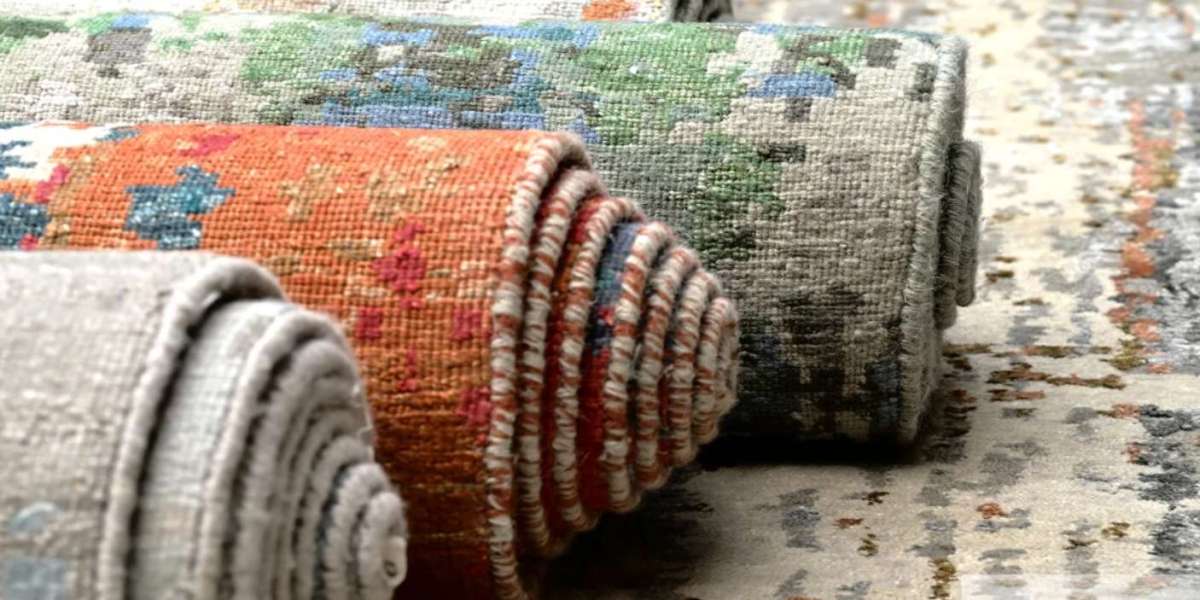Carpets are more than just floor coverings; they’re an investment that elevates the comfort and aesthetic appeal of any space. Among the many options available, wool carpets and bamboo silk carpets have become two of the most popular choices for homeowners. Each material offers unique characteristics and benefits, making the decision between the two dependent on your specific needs and priorities.
This blog will break down everything you need to know about wool carpets vs. bamboo silk carpets, from their properties to pros and cons, and a comparison across key factors like durability, cost, and maintenance. If you’re trying to decide the best option for your home, read on.
Wool Carpets
Characteristics of Wool Carpets
Wool is a natural fiber that has been used for centuries to create warm, durable textiles. Wool carpets are typically made from sheep’s wool, a renewable and biodegradable resource. Known for their luxurious feel and robust build, wool carpets are highly regarded in the flooring industry.
Pros of Wool Carpets
Durability
Wool is inherently strong and resilient, making it an ideal choice for high-traffic areas. It retains its shape even after extended wear.
Fire Resistance
Wool is naturally flame-resistant, offering added safety benefits in case of accidental fires.
Comfort and Insulation
Wool carpets feel soft and plush underfoot. Additionally, wool is highly effective at insulation, keeping rooms warm in winter and cool in summer.
Eco-Friendly
Because it’s a natural fiber, wool is sustainable and biodegradable, making it an environmentally conscious choice.
Stain Resistance
Wool has natural oils that prevent most stains and dirt from penetrating into the fibers.
Cons of Wool Carpets
Cost
High-quality wool carpets tend to be more expensive compared to other materials like synthetic fibers or bamboo silk.
Moisture Sensitivity
Wool absorbs moisture, which can lead to mold or mildew if used in extremely humid environments or not cared for properly.
High Maintenance
Wool carpets typically require professional cleaning to preserve their appearance and longevity.
Bamboo Silk Carpets
Characteristics of Bamboo Silk Carpets
Bamboo silk is a semi-synthetic fiber derived from the cellulose of bamboo plants. Unlike natural silk derived from silkworms, bamboo silk is more eco-friendly and cost-effective. These carpets are popular for their shiny, luxurious appearance, making them a modern favorite.
Pros of Bamboo Silk Carpets
Aesthetics
Bamboo silk carpets have a shiny, elegant finish that reflects light beautifully, giving them a high-end look.
Soft Texture
Soft and smooth to the touch, bamboo silk carpets feel luxurious underfoot.
Eco-Friendly Production
Bamboo is a renewable resource that grows quickly without the need for pesticides, making bamboo silk a more sustainable option compared to many synthetic materials.
Cost-Effective
Compared to natural silk carpets, bamboo silk offers a far less expensive alternative while still feeding into a sophisticated aesthetic.
Cons of Bamboo Silk Carpets
Durability Issues
Bamboo silk is more delicate than wool and may show wear and tear more easily in high-traffic zones.
Moisture Sensitivity
Like wool, bamboo silk is prone to absorbing moisture, making it less suitable for humid climates or spill-prone areas.
Stain Vulnerability
Bamboo silk carpets are less resistant to stains and may require more frequent cleaning and care to maintain their appearance.
Wool vs. Bamboo Silk Carpets: A Head-to-Head Comparison
Durability
- Wool Carpet is the sturdier option, withstanding heavy foot traffic for years without losing its shape.
- Bamboo Silk Carpet, while visually appealing, is more fragile and better suited for low-traffic areas.
Comfort
- Wool Carpets provide a plush, warm feel with excellent insulation.
- Bamboo Silk Carpets are silky and smooth, offering luxurious comfort underfoot.
Aesthetic Appeal
- Wool Carpets have a more traditional, classic look and focus on durability rather than shiny aesthetics.
- Bamboo Silk Carpets excel in visual appeal, providing a glossy, modern finish that catches the light beautifully.
Maintenance
- Wool Carpets require professional cleaning and more time to maintain their durability.
- Bamboo Silk Carpets also demand careful maintenance but are particularly prone to visible stains and damage if not properly cared for.
Environmental Impact
- Wool Carpets and Bamboo Silk Carpets score high on eco-friendliness. However, bamboo silk gains a slight edge for requiring fewer resources to produce.
Cost
- Wool Carpets are typically more expensive due to their high quality and longer lifespan.
- Bamboo Silk Carpets are a more budget-friendly option for those prioritizing aesthetics.
Which Carpet Should You Choose?
The best choice between wool and bamboo silk carpets ultimately depends on your specific needs and priorities.
- Choose a wool carpet if you value durability, comfort, and a more classic look for high-traffic areas. Wool is a long-term investment, particularly for frequently used rooms like living rooms or hallways.
- Opt for a bamboo silk carpet if style and aesthetic appeal are important. These are great for low-traffic areas like bedrooms, where their glossy finish can shine without the risk of frequent wear and tear.
At the end of the day, both materials bring unique benefits to the table. When purchasing, consider factors like room use, budget, and upkeep preferences. Take your time to evaluate what aligns best with your needs.
If you’re ready to upgrade your space, why wait? Browse our collection of wool carpets and bamboo silk carpets today to find the perfect fit for your home.
If you are Seraching more so you can visit now: https://theambiente.com/



